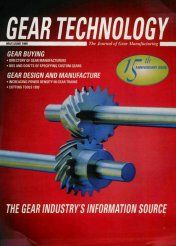Gear design and specification are not one and the same. They are the first two steps in making a gear. The designer sits down and mathematically defines the gear tooth, working with the base pitch of the gear, the pressure angle he wants to employ, the number of teeth he wants, the lead, the tooth thickness, and the outside, form and root diameters. With these data, the designer can create a mathematical model of the gear. At this stage, he will also decide whether the gear will be made from existing cutting tools or whether new tools will be needed, what kind of materials he will use, and whether or not he will have the gear heat treated and finished.
